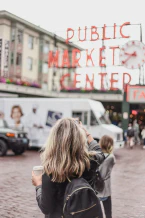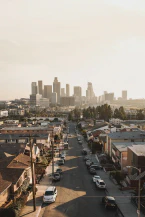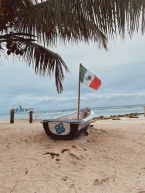Revealing Washington DC: Your Ultimate Guide to the Capitals Wonders

Essential Tips for Your Washington DC Adventure
Hey there, fellow travelers! It’s Jennie from Tour-Agency.com, and I’m excited to share some insider tips to help you plan the ultimate trip to Washington DC. As the capital city of the United States, this historic destination is brimming with iconic landmarks, picturesque parks, and an abundance of cultural experiences. Let’s dive right in!
Best Time to Visit Washington DC
Although DC is a year-round destination, the best time to visit is between April and May, when the city is adorned with cherry blossoms. To experience cool, pleasant weather and fewer tourists, consider planning your trip between March-May or September-November. Keep in mind that July-August is the high season for tourists and the city tends to get quite hot.
For budget travelers, the cheapest time to visit is between Thanksgiving and New Year’s when hotel prices drop significantly. Just be sure to check the weather forecast if you’re planning a weekend getaway.
Typical Costs in Washington DC
Washington DC offers a variety of accommodation options, ranging from dorm beds in hostels ($25-$50 per night) to private rooms in budget hotels ($50-$60 per night). For hotels, guest houses, and small B&Bs, expect to pay between $120-$200 per night, while luxury and high-end hotels start at $300 per night.
When it comes to transportation, a metro day pass costs $14.50, and a single ride will set you back around $3. Taxis can be pricey, with fares starting at $12 depending on your zone and distance. Fortunately, many of DC’s attractions are within walking distance, making it easy to explore without spending too much on transport.
Food options in DC cater to all budgets, from cheap eats to high-end dining. Breakfast and lunch options can be found for under $10, while budget dinners range between $15-$30. For a 3-course meal for two at a mid-range restaurant, expect to pay at least $70, and at high-end establishments, the average cost is $60-$100 per person.
Getting to Washington DC
Washington DC is served by several airports, including Regan National (the nearest and most convenient), Jules Airport, and Baltimore. Once you arrive, you can catch the metro, super shuttle, or taxi into the city. Alternatively, you can drive or take a bus from nearby cities like New York, with prices starting at around $24.
For those traveling along the East Coast, the Amtrak train serves Washington DC, stopping at Union Station. From there, you can catch the Red Line to your hotel.
Getting Around Washington DC
One of the best things about Washington DC is its walkability. Many of the city’s top attractions are located in close proximity, making it easy to explore on foot. The Metro Rail and Metro Bus systems are also safe, clean, and efficient ways to get around. When planning your trip, be sure to research hotel locations and use the Metro map to plan your routes.
Must-See Attractions in Washington DC
There’s no shortage of incredible sights and experiences in Washington DC, but here are a few you won’t want to miss:
- Iconic memorials like the Lincoln Memorial, Vietnam and Korean War Memorial, Martin Luther King Jr. Memorial, and the World War II Memorial
- The White House, Tidal Basin, and Arlington National Cemetery
- Smithsonian museums, including the National Museum of African American History and Culture, Museum of Natural History, National Museum of African Art, and National Air and Space Museum
Exploring the
Smithsonian Museums
The Smithsonian museums are an integral part of any visit to Washington DC. Open every day except December 25th, these institutions offer free admission, but you’ll need to secure a ticket in advance, especially for larger groups. Here are some of the standout options:
- National Museum of African American History and Culture: This unique museum is dedicated to African American art, life, history, and culture, featuring engaging multi-level exhibits.
- Museum of Natural History: A family favorite, this museum allows you to delve into the world’s scientific heritage and explore the origins of various animal species.
- National Museum of African Art: Showcasing both contemporary and traditional art from the continent of Africa, this museum is a must-visit for art enthusiasts.
- National Air and Space Museum: Perfect for kids and adults alike, this museum houses space artifacts, rockets, missiles, and various types of planes.
There are many more museums and art galleries to explore within the Smithsonian Institute, so be sure to do your research before you go.
We hope these tips and insights help you make the most of your time in Washington DC! Let us know what you’re most looking forward to experiencing in this historic city, and don’t forget to share your own travel tips and recommendations. Safe travels and happy exploring!
Conclusion
Washington DC truly has something for everyone, whether you’re a history buff, art enthusiast, or simply looking to explore a beautiful and culturally rich destination. As you plan your trip, be sure to consider the best time to visit, typical costs, and transportation options to ensure a smooth and enjoyable experience.
Don’t forget to take advantage of the walkability of the city and immerse yourself in the incredible array of attractions, including iconic memorials, the White House, and the unparalleled Smithsonian museums. With a little research and preparation, you’ll be able to create unforgettable memories and gain a deeper appreciation for the history and culture that define this remarkable city.
So, pack your bags, plan your itinerary, and embark on a journey to the heart of the United States – Washington DC awaits!
1. What is the best way to get from the airport to downtown Washington DC?
The most convenient option is to use the Metro, which connects Reagan National Airport to downtown via the Blue and Yellow lines. Alternatively, you can take a super shuttle or taxi, though these can be more expensive.
2. Are there any budget-friendly dining options in Washington DC?
Absolutely! Washington DC offers a variety of affordable dining options, from fast food joints to local eateries. You can easily find breakfast and lunch options for under $10 and budget dinners for $15-$30.
3. Can I visit the Smithsonian museums without a ticket?
While admission to the Smithsonian museums is free, you still need a ticket to enter. It’s recommended to book your tickets in advance, particularly if you’re traveling with a large group.
4. Is it easy to navigate Washington DC using public transportation?
Yes, Washington DC’s public transportation system, including the Metro Rail and Metro Bus, is clean, safe, and efficient. Many hotels are conveniently located near Metro stations or bus routes, making it easy to get around the city.
5. Are there any lesser-known attractions worth visiting in Washington DC?
Beyond the famous landmarks and museums, consider exploring neighborhoods like Georgetown for its historic charm, Capitol Hill for its vibrant dining scene, and the Wharf for waterfront views and entertainment options. Don’t forget to check out local events and festivals during your visit for a more authentic experience!
















